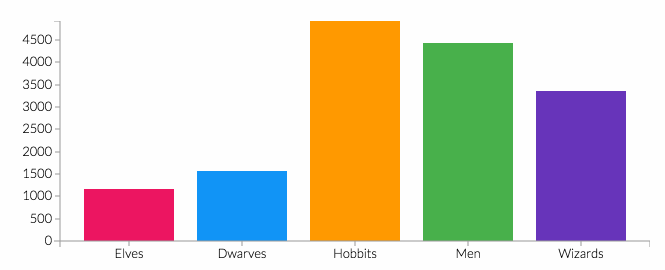Gerontology Curriculum in the Aisyiyah Senior School (ASS) Program in Condong Catur Sleman
DOI:
 https://doi.org/10.32478/xa5f8947
https://doi.org/10.32478/xa5f8947
Keywords:
Gerontology, Curriculum, Aisyiyah Senior SchoolAbstract
This research analyses the gerontology curriculum at Aisyiyah Senior School in Condong Catur. Through a qualitative approach, this study aims to understand how the gerontology curriculum is designed and implemented in the context of senior education. Data was collected through observation, in-depth interviews with teaching staff, and curriculum document studies. The research results indicate that the gerontology curriculum at this school has been designed considering the unique needs of senior learners, focusing on improving their quality of life through continuing education. These findings provide important insights into how senior education can be tailored to meet the needs and aspirations of older generations. The results show that the gerontology curriculum at Aisyiyah Senior School incorporates various essential aspects of senior life, including physical and mental health, social relationships, and participation in meaningful activities. This curriculum is designed to promote healthy and active ageing and enhance senior learners' quality of life. In addition, this school shows a solid commitment to a lifelong learning approach by providing opportunities for seniors to continue learning and growing. In conclusion, this study indicates that the gerontology curriculum at Aisyiyah Senior School is an effective model for senior education. These findings can provide valuable guidance for other institutions wishing to develop or improve their educational programs for older generations.
Downloads
References
Al-Bukhari, A. ’Abdillāh M. bin I. bin I. bin al-M. A.-J. (2012). Sahīh Bukharī (Vol. 2). Dār At-Ta’shil.
Atchley, R. C. (1989). A continuity theory of normal aging. The Gerontologist, 29(2), 183–190.
Bentham, J. (1830). The greatest happiness of the greatest number. Bentham’s Political Thought, 309–310.
Braun, V., & Clarke, V. (2006). Using thematic analysis in psychology. Qualitative Research in Psychology, 3(2), 77–101.
Ejim, M. (2020). Integrity Versus Despair: Perceptions Of Aging Among African Americans In Late Life.
Erikson, E. H. (1993). Childhood and society. WW Norton & Company.
Fatmawati, V., & Imron, M. A. (2017). Perilaku koping pada lansia yang mengalami penurunan gerak dan fungsi. Intuisi: Jurnal Psikologi Ilmiah, 9(1), 26–38.
George, D. R., Whitehouse, E. R., & Whitehouse, P. J. (2016). Asking more of our metaphors: Narrative strategies to end the “war on Alzheimer’s” and humanize cognitive aging. The American Journal of Bioethics, 16(10), 22–24.
Gunarsa, S. D. (1982). Dasar dan teori perkembangan anak. BPK Gunung Mulia.
Havighurst, R. J., & Albrecht, R. (1953). Older people.
Issawi, S., & Dauphin, V. B. (2020). Industry versus inferiority. Encyclopedia of Personality and Individual Differences, 2244–2247.
Just, J. M., Schulz, C., Bongartz, M., & Schnell, M. W. (2010). Palliative care for the elderly-developing a curriculum for nursing and medical students. BMC Geriatrics, 10, 1–8.
Lee, E. J., & Park, S. J. (2020). Immersive experience model of the elderly welfare centers supporting successful aging. Frontiers in Psychology, 11, 8.
McKee, J. K. (2014). Community development and adult education: A symbiotic relationship. University of Manitoba (Canada).
Mokalu, V. R., & Boangmanalu, C. V. J. (2021). Teori Psikososial Erik Erikson: Implikasinya Bagi Pendidikan Agama Kristen Di Sekolah. VOX EDUKASI: Jurnal Ilmiah Ilmu Pendidikan, 12(2), 180–192.
Muhammad, T. (2016). POLA PENDIDIKAN ISLAM BAGI USIA LANJUT. ATTARBIYAH: Journal of Islamic Culture and Education, 1(2), 335–364.
Nantais, C., & Stack, M. (2020). Generativity versus stagnation. Encyclopedia of Personality and Individual Differences, 1773–1775.
Ninin, R. H., & Amelinda, R. (2019). Bisakah Angklung menjadi Instrumen Psikoedukatif? Studi Eksploratif pada Pemain Angklung. Jurnal Psikologi Islam Dan Budaya, 2(2), 87–98.
Rahmawaty, D., Nadiroh, N., Husen, A., & Purwanto, A. (2021). Merajut Sebagai Kegiatan Baru Untuk Terapi Mengurangi Kecemasan Selama Masa Pandemi Covid. Jurnal Review Pendidikan Dan Pengajaran (JRPP), 4(1), 107–113.
Ryff, C. D., & Keyes, C. L. M. (1995). The structure of psychological well-being revisited. Journal of Personality and Social Psychology, 69(4), 719.
Sarang, S. D., Karnam, A. G., & Shitole, R. B. (2019). To investigate the relationship between psychological factors and stress in two different developmental stages in adults: A cross sectional study. The Indian Journal of Occupational Therapy, 51(3), 102–106.
Solobutina, M. M. (2020). Ego identity of intellectually gifted and sport talented individuals in puberty and adolescence. Образование и Саморазвитие, 15(1), 12–20.
Weruin, U. U. (2019). Teori-Teori Etika Dan Sumbangan Pemikiran Para Filsuf Bagi Etika Bisnis. Jurnal Muara Ilmu Ekonomi Dan Bisnis, 3(2), 313–322.
Wisky, I. A. (2022). Deteksi Tepi untuk Mendeteksi Kondisi Otak Menggunakan Metode Prewitt. Jurnal Teknologi, 12(2), 34–39.
Yuliana, P. (2022). ANALISIS ASAL MULA TEORI ETIKA DAN TEORI PERKEMBANGAN DARI TAHUN KE TAHUN. Jurnal Pusdansi, 2(10).
Downloads
Published
Issue
Section
License
Copyright (c) 2024 'Aabidah Ummu 'Aziizah

This work is licensed under a Creative Commons Attribution-ShareAlike 4.0 International License.
Authors hold and retain copyright and grant the journal right of first publication with the work simultaneously licensed under a http://creativecommons.org/licenses/by-sa/4.0 that allows others to share the work with an acknowledgment of the work's authorship and initial publication in this journal.

This work is licensed under a Creative Commons Attribution-ShareAlike 4.0 International License.
How to Cite
Similar Articles
- Ismatul Izzah, ANALISIS MANIFESTASI IMPLEMENTASI SCHOOL BASED MANAGEMENT PADA PENGEMBANGAN PROJEK PENGUATAN PROFIL PELAJAR PANCASILA (P5) DI LEMBAGA PENDIDIKAN , Evaluasi: Jurnal Manajemen Pendidikan Islam: Vol. 8 No. 1 (2024): Evaluasi-Edisi Maret
- Bahar Agus Setiawan, Sofyan Rofi, Antara Recognisi, Rekonstruksi dan Kekhawatiran Hilangnya Indigenousity Pondok Pesantren , Evaluasi: Jurnal Manajemen Pendidikan Islam: Vol. 4 No. 1 (2020): Evaluasi- edisi Maret
- Sitti Nuraini, THE EFFECTIVENESS OF SCHOOL PRINCIPAL LEADERSHIP IN ENHANCING TEACHER PROFESSIONAL COMPETENCE AT SMK MIFTAHUL ULUM TUMPENG WONOSARI, BONDOWOSO , Evaluasi: Jurnal Manajemen Pendidikan Islam: Vol. 8 No. 2 (2024): Evaluasi-Edisi September
- Muhammad Anggung Manumanoso Prasetyo, Rahmatullah Rahmatullah, PESANTREN EFFECTIVENESS: THE ROLE OF ORGANIZATIONAL CULTURE IN ENHANCING PERFORMANCE IN PESANTREN INSTITUTIONS , Evaluasi: Jurnal Manajemen Pendidikan Islam: Vol. 8 No. 1 (2024): Evaluasi-Edisi Maret
- Alviyatul Qodri, Maskud Maskud, Faisol Nasar bin Madi, ANALISIS MANAJEMEN PENGELOLAAN KELAS DALAM MENINGKATKAN KEMAMPUAN KOMUNIKASI MULTILINGUAL DENGAN MODEL CONTEXTUAL TEACHING AND LEARNING , Evaluasi: Jurnal Manajemen Pendidikan Islam: Vol. 8 No. 1 (2024): Evaluasi-Edisi Maret
- Sa'adatun Niswah, Nur Asiyah, Nasikhin Nasikhin, Wahyudi Wahyudi, TECHNOLOGY-BASED EDUCATION MANAGEMENT IN SALAF ISLAMIC BOARDING SCHOOLS , Evaluasi: Jurnal Manajemen Pendidikan Islam: Vol. 8 No. 2 (2024): Evaluasi-Edisi September
- Siti Aminah Prayogo, Ari Widodo, MEMBANGUN BUDAYA MUTU DI MADRASAH UNGGUL (Studi Kasus di MAN 1 Jember dan MA Unggulan Nurul Islam Jember) , Evaluasi: Jurnal Manajemen Pendidikan Islam: Vol. 3 No. 1 (2019): EVALUASI-edisi MARET
- Fitratul Isma, Lailatul Munawwaroh, IMPLEMENTASI MANAJEMEN BERBASIS MADRASAH DALAM PENINGKATAN MUTU MADRASAH (STUDI KASUS DI MI MAARIF GONDOSULI MUNTILAN) , Evaluasi: Jurnal Manajemen Pendidikan Islam: Vol. 3 No. 1 (2019): EVALUASI-edisi MARET
- ja'far ja'far, INOVASI KEPEMIMPINAN KEPALA MADRASAH KREATIF DALAM MENINGKATKAN MUTU PENDIDIKAN DI SEKOLAH , Evaluasi: Jurnal Manajemen Pendidikan Islam: Vol. 3 No. 1 (2019): EVALUASI-edisi MARET
- Noorrela Ariyunita, PENGARUH GAYA KEPEMIMPINAN KEPALA MADRASAH TERHADAP KINERJA PENDIDIDIK DAN KEPENDIDIKAN DI MADRASAH IBTIDAIYAH (MI) AL HUDA MAGUWO, SLEMAN. , Evaluasi: Jurnal Manajemen Pendidikan Islam: Vol. 3 No. 1 (2019): EVALUASI-edisi MARET
You may also start an advanced similarity search for this article.













